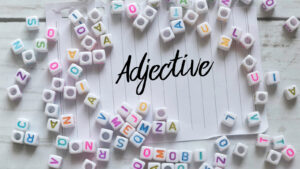Reading is a simple task for most people. But ask them how they learnt to read English, and they have trouble remembering. Here are some easy steps.
Spoken language
Practice known words – feel the words with your lips, tongue, and teeth so that you know how they are made. Build up a vocabulary of items such as everyday items, names, and numbers. Play with onset and rhyme by matching the first sound of the word or the last e.g., big-blue-balloon or mat-hat-cat
First Books
Link known words to the written representation as well as use picture clues. Even young children pick up words from daily routines such as shop names, numbers, and place names.
Phonics
English schools use systematic synthetic phonics schemes to teach word building. Teachers start with the smallest parts of word sounds, called phonemes, and build words – sit, pan. They demonstrate how to blend each phoneme into the next one, to make a full word. The word is then repeated to reinforce the sight of the word with sound. As the words lengthen, the first phoneme is emphasized, and the rest are kept softly-spoken. This enables the learner to remember where the word started for the repetition.
The written representation, a grapheme, is shared and practiced too. Many phonemes are represented by one letter from the alphabet; however, some are made up of two, three, or four letters (digraphs, trigraphs, and quadraphs). Furthermore, there are alternative graphemes to write the same phoneme; the long /a/ phoneme can be represented with ai, ay, a-e such as in the words bait, bay, and bake.
Letters and Sounds, the Department for Education’s Guidance on Phonics, is available at https://www.gov.uk/government/publications/letters-and-sounds. The Rose Report highlights the importance of Reading and Synthetic Phonics, https://dera.ioe.ac.uk/5551/2/report.pdf.
High-Frequency Words including Common Exception Words
There are lists of commonly used words, and these also include exception words. We use these words between 50-80% of the time, with the addition of subject-specific words. Exception words are ones that do not follow the standard phonics patterns e.g., I, a, the, do.
These word lists are practiced regularly at school and appear throughout early reading books. Teachers use these as the basis for weekly spelling tests. The aim is for the reader to build these words as quickly as possible into their sight vocabulary i.e., know the words automatically on sight rather than decode.
Early Reading Books
Most schools buy books that fit into reading schemes so that learners have the correct sounds and commonly used words that support their lessons and level of development. The books are designed to offer small increments in the challenge as well as provide opportunities for comprehension of stories and new knowledge.
Games
There are many games to embed phonics and word-level knowledge. Here are three easy ones:-
Eye Spy – A spoken game where one person challenges another or a group to guess their word by naming the first sound. The word must be a noun (object, place, or person) that they can see, e.g. ‘I spy with my little eye something beginning with …” The person who guesses correctly gets to make the next challenge.
Word ladders – A written game starting with a three-letter word. Each player changes one letter to create a new word e.g., big-bag-ban-fan.
Cloze procedure – Blank out a word in a text and challenge the readers to identify it. Readers have to understand word order (syntax) and word meaning (semantics) to win.
Individual Reading
Read anything and everything! Get practicing with books, posters, magazines, instructions, song lyrics… The most important thing is to let the reader choose their own text and then discuss the content. Public libraries, bookshops, and second-hand book sales make great places to browse.
Shared Reading
Audio versions of books, subtitled films or programs, and sharing books out loud are great ways to gain meaning and fully enjoy more advanced texts. Learning is social.
Handwriting
Handwriting schemes produce workbooks and exercises to practice graphemes, words, and sentences. Always say the words out loud when writing so that the sound matches the sight.
If you would like more information, visit emilyargent.com or find Emily’s books on Amazon.




